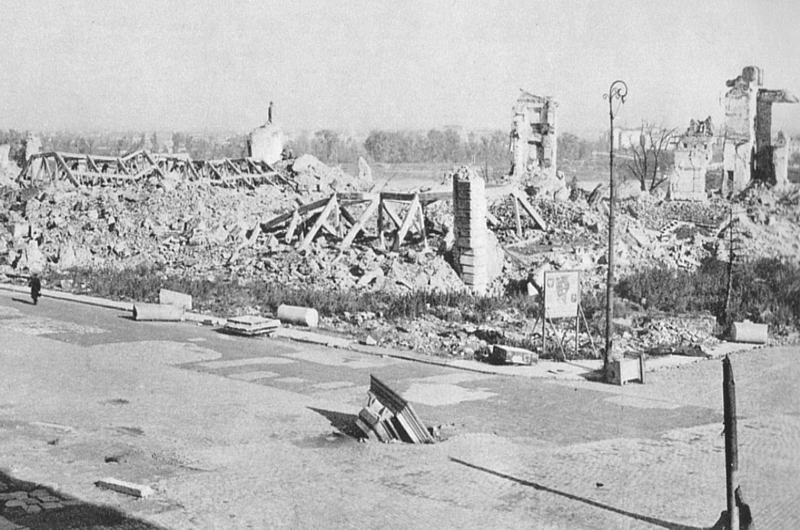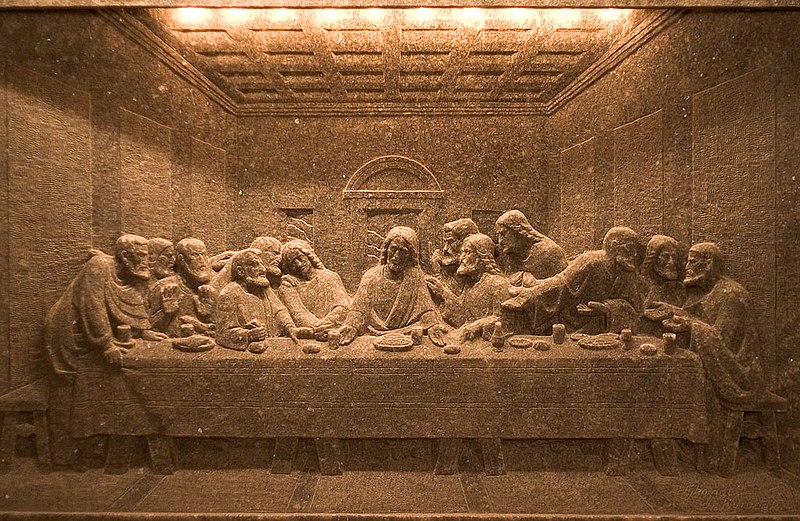 Many thanks to my FB friend Gabriel Alejandro Etinzon
Many thanks to my FB friend Gabriel Alejandro Etinzon
Total Pageviews
Showing posts with label Poland-UNESCO 13. Show all posts
Showing posts with label Poland-UNESCO 13. Show all posts
Tuesday, January 24, 2012
Sunday, January 10, 2010
Historic Centre of Warsaw
Card # 45  This postcard sent to me by Kazimierz
This postcard sent to me by Kazimierz
Warsaw's Old Town was established in the 13th century. Initially surrounded by an earthwork rampart, prior to 1339 it was fortified with brick city walls. The town originally grew up around the castle of the Dukes of Mazovia that later became the Royal Castle. The Market Square (Rynek Starego Miasta) was laid out sometime in the late 13th or early 14th century, along the main road linking the castle with the New Town to the north.
Until 1817 the Old Town's most notable feature was the Town Hall built before 1429. In 1701 the square was rebuilt by Tylman of Gameren, and in 1817 the Town Hall was demolished. Since the 19th century, the four sides of the Market Square have borne the names of four notable Poles who once lived on the respective sides: Ignacy Zakrzewski (south), Hugo Kołłątaj (west), Jan Dekert (north) and Franciszek Barss (east). Read more
 Project of rebuilding the Royal Castle, 1843 by Adam Idźkowski.
Project of rebuilding the Royal Castle, 1843 by Adam Idźkowski.
 Royal Castle in 1945. It was deliberately destroyed by the Germans in 1944.
Royal Castle in 1945. It was deliberately destroyed by the Germans in 1944.
The Castle Today

Information and Image Obtained From Wikipedia, the free encyclopedia
 This postcard sent to me by Kazimierz
This postcard sent to me by KazimierzWarsaw's Old Town was established in the 13th century. Initially surrounded by an earthwork rampart, prior to 1339 it was fortified with brick city walls. The town originally grew up around the castle of the Dukes of Mazovia that later became the Royal Castle. The Market Square (Rynek Starego Miasta) was laid out sometime in the late 13th or early 14th century, along the main road linking the castle with the New Town to the north.
Until 1817 the Old Town's most notable feature was the Town Hall built before 1429. In 1701 the square was rebuilt by Tylman of Gameren, and in 1817 the Town Hall was demolished. Since the 19th century, the four sides of the Market Square have borne the names of four notable Poles who once lived on the respective sides: Ignacy Zakrzewski (south), Hugo Kołłątaj (west), Jan Dekert (north) and Franciszek Barss (east). Read more
 Project of rebuilding the Royal Castle, 1843 by Adam Idźkowski.
Project of rebuilding the Royal Castle, 1843 by Adam Idźkowski. Royal Castle in 1945. It was deliberately destroyed by the Germans in 1944.
Royal Castle in 1945. It was deliberately destroyed by the Germans in 1944.The Castle Today

Information and Image Obtained From Wikipedia, the free encyclopedia
Tuesday, December 29, 2009
Centennial Hall in Wrocław
Card # 42 
This postcard sent to me by Kazimierz
It was in the Lower Silesian capital of Breslau on 10 March 1813 that King Frederick William III of Prussia called upon the German people in his "Aufruf an mein Volk" to rise up against Napoleon's occupation of Germany. In October of that year, in the Battle of Leipzig at Leipzig, Napoleon was defeated. The opening of the hall was part of the celebration commemorating the 100th anniversary of the battle, hence the name. The hall was renamed Hala Ludowa ("People's Hall") when the city became part of Poland under a communist government in 1945. The Polish translation of the original German name, Hala Stulecia, is also used with reference to the history of the building.
The cupola was made of reinforced concrete and with an inner diameter of 69 m and 42 m high; it was the largest building of its kind at the time of construction. The symmetrical quatrefoil shape with a large circular central space seats 7,000 persons. The dome is 23m high, made of in steel and glass. The Jahrhunderthalle became a key reference for the development of reinforced concrete structures in the a 20th century. Read more

This postcard sent to me by Kazimierz
It was in the Lower Silesian capital of Breslau on 10 March 1813 that King Frederick William III of Prussia called upon the German people in his "Aufruf an mein Volk" to rise up against Napoleon's occupation of Germany. In October of that year, in the Battle of Leipzig at Leipzig, Napoleon was defeated. The opening of the hall was part of the celebration commemorating the 100th anniversary of the battle, hence the name. The hall was renamed Hala Ludowa ("People's Hall") when the city became part of Poland under a communist government in 1945. The Polish translation of the original German name, Hala Stulecia, is also used with reference to the history of the building.
The cupola was made of reinforced concrete and with an inner diameter of 69 m and 42 m high; it was the largest building of its kind at the time of construction. The symmetrical quatrefoil shape with a large circular central space seats 7,000 persons. The dome is 23m high, made of in steel and glass. The Jahrhunderthalle became a key reference for the development of reinforced concrete structures in the a 20th century. Read more
Sunday, November 15, 2009
Castle of the Teutonic Order in Malbork
Card # 39  This postcard sent to me by Kazimierz
This postcard sent to me by Kazimierz
The Castle in Malbork was built in Prussia by the Teutonic Order as an Ordensburg. The Order named it Marienburg, literally "Mary's Castle". The town which grew around it was also named Marienburg, but since 1945 it is again, after 173 years, part of Poland and known as Malbork.
The castle is a classic example of a medieval fortress, and is the world’s largest brick gothic castle. UNESCO listed the castle and its museum as World Heritage Sites in December 1997 as Castle of the Teutonic Order in Malbork. It is one of two World Heritage Sites in the region with origins in the Teutonic Order. The other is the Medieval Town of Toruń, founded in 1231 as the site of the castle Thorn. Read more
 Post WWII ruins of the castle
Post WWII ruins of the castle
Information and Image Obtained From Wikipedia, the free encyclopedia
 This postcard sent to me by Kazimierz
This postcard sent to me by KazimierzThe Castle in Malbork was built in Prussia by the Teutonic Order as an Ordensburg. The Order named it Marienburg, literally "Mary's Castle". The town which grew around it was also named Marienburg, but since 1945 it is again, after 173 years, part of Poland and known as Malbork.
The castle is a classic example of a medieval fortress, and is the world’s largest brick gothic castle. UNESCO listed the castle and its museum as World Heritage Sites in December 1997 as Castle of the Teutonic Order in Malbork. It is one of two World Heritage Sites in the region with origins in the Teutonic Order. The other is the Medieval Town of Toruń, founded in 1231 as the site of the castle Thorn. Read more
 Post WWII ruins of the castle
Post WWII ruins of the castleInformation and Image Obtained From Wikipedia, the free encyclopedia
Monday, November 9, 2009
Cracow's Historic Centre
Card # 38 This postcard sent to me by Kazimierz
This postcard sent to me by Kazimierz
Kraków is one of the largest and oldest cities in Poland and a popular tourist destination. Its historic centre was inscribed on the list of World Heritage Sites as the first of its kind. Situated on the Vistula river in the Lesser Poland region, the city dates back to the 7th century. Kraków has traditionally been one of the leading centres of Polish academic, cultural and artistic life, and is one of Poland's most important economic centres. It was the capital of Poland from 1038 to 1596, the capital of the Grand Duchy of Kraków from 1846 to 1918, and the capital of Kraków Voivodeship from the 14th century to 1999. It is now the capital of the Lesser Poland Voivodeship. Read more
 This postcard sent to me by Kazimierz
This postcard sent to me by KazimierzKraków is one of the largest and oldest cities in Poland and a popular tourist destination. Its historic centre was inscribed on the list of World Heritage Sites as the first of its kind. Situated on the Vistula river in the Lesser Poland region, the city dates back to the 7th century. Kraków has traditionally been one of the leading centres of Polish academic, cultural and artistic life, and is one of Poland's most important economic centres. It was the capital of Poland from 1038 to 1596, the capital of the Grand Duchy of Kraków from 1846 to 1918, and the capital of Kraków Voivodeship from the 14th century to 1999. It is now the capital of the Lesser Poland Voivodeship. Read more
Tuesday, August 25, 2009
Wieliczka Salt Mine
Card # 13
 These postcard sent to me by Rafal Sulima
These postcard sent to me by Rafal Sulima
Is located southern Poland. In a town called Wieliczka. Depth of 327 meters and is over 300km long. Producing table salt since 13th century till 2007. In 1978 the Wieliczka salt mine was placed on the original UNESCO list of the World Heritage Sites. The oldest sculptures were carved out of rock salt by miners; more recent figures have been fashioned by contemporary artists. Commercial mining was discontinued in 1996 due to low salt prices and mine flooding.
 Da Vinci's "The Last Supper"
Da Vinci's "The Last Supper"
carved in a wall of rock salt
 Old corridor
Old corridor
Information and Image Obtained From Wikipedia, the free encyclopedia

 These postcard sent to me by Rafal Sulima
These postcard sent to me by Rafal SulimaIs located southern Poland. In a town called Wieliczka. Depth of 327 meters and is over 300km long. Producing table salt since 13th century till 2007. In 1978 the Wieliczka salt mine was placed on the original UNESCO list of the World Heritage Sites. The oldest sculptures were carved out of rock salt by miners; more recent figures have been fashioned by contemporary artists. Commercial mining was discontinued in 1996 due to low salt prices and mine flooding.
 Da Vinci's "The Last Supper"
Da Vinci's "The Last Supper"carved in a wall of rock salt
 Old corridor
Old corridorInformation and Image Obtained From Wikipedia, the free encyclopedia
Subscribe to:
Posts (Atom)